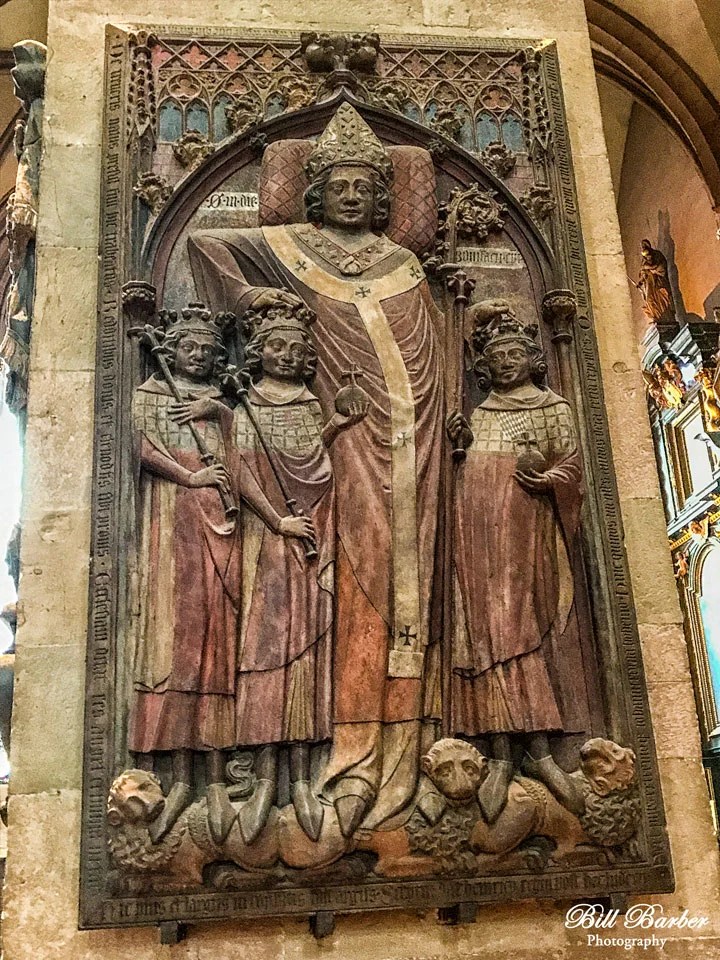One way that river cruising is different from ocean cruising is that there is always something to see. One minute you see old castles, then some kind of industry, then a campground, then you’re in the middle of some town but wait – now you’re in the middle of a vineyard.
Germany’s wine capital, Mainz was founded by the Romans on the left bank of the Rhine and has more than 2,000 years of history. Looming over the Altstadt’s romantic warren of cobblestone streets is the huge Romanesque cathedral, burial place for centuries of ruling Prince Archbishops.
The city’s museums have Roman artefacts discovered beneath the city, like a small armada of 1700-year-old warships now kept in an industrial locomotive shed. In the 1430s the Mainz citizen Johannes Gutenberg invented the printing press, and the museum dedicated to him has two of the remaining editions of the Gutenberg bible.
I was a bad boy in the museum! Upon entering, there was a sign that I thought said “no flash photography” and I took a photo of one of the Gutenberg bibles. Our docent quickly chastised me because the sign had actually said “no photography”. I still got the picture, see below!
At the confluence of the Rhine and Main rivers lies the city of Mainz, the beautiful capital of the Rhineland-Palatinate region — a place you should definitely plan to visit. This is a city of rich cultural heritage, with roots that date back millennia in which you could lose yourself for weeks exploring. It’s also a bright and vibrant place to live, with wining and dining options to delight any culinary enthusiast.
The Rheinhessen is German’s largest wine-growing region, and Mainz is certainly in the heart of it. The area has 26,500 hectares of vineyards, which produce the German favourites Riesling and Silvaner. The city, especially the Old Town, is home to many traditionally-timbered Alstadt taverns that serve the very best of these local wines, making it the ideal destination if you want to sample what the region has to offer.







